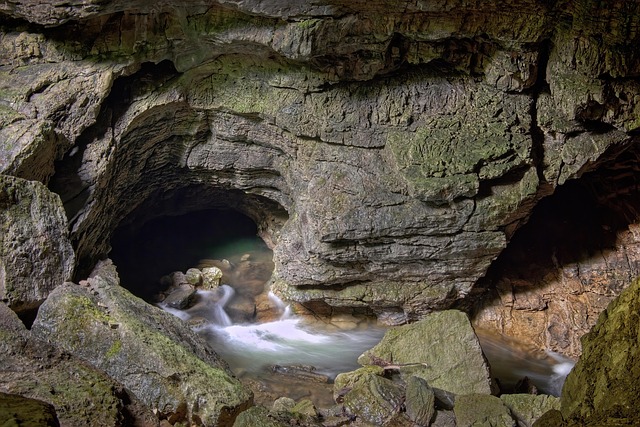Ground-Penetrating Radar (GPR) is a non-invasive technology offering high-resolution, real-time imaging of underground structures and utilities, making it indispensable in various sectors. By emitting electromagnetic pulses and analyzing reflected signals, GPR creates precise 3D images, enhancing project accuracy, reducing construction risks, and streamlining surveying processes. Ideal for critical infrastructure projects, GPR minimizes damage to hidden pipes, cables, and wires while providing efficient decision-making support. Despite challenges like signal attenuation and varying resolutions based on frequency, future advancements aim to overcome these limitations through innovative signal processing, improved antenna designs, and hybrid imaging techniques.
Ground-penetrating radar (GPR) is a powerful tool for detailed subsurface imaging. This non-invasive technology uses electromagnetic waves to penetrate the earth’s surface, revealing hidden structures and objects beneath. In this article, we explore the advantages of GPR for subsurface utility detection and planning, its various applications, as well as the challenges and future prospects of this innovative technology. By understanding GPR, professionals can optimize infrastructure projects while ensuring safety and efficiency.
Understanding Ground-Penetrating Radar (GPR) Technology
Ground-Penetrating Radar (GPR) is an advanced technology that enables detailed imaging of the subsurface, making it invaluable in various industries. This non-invasive technique uses high-frequency radio waves to penetrate the earth’s surface and create accurate representations of what lies beneath. GPR sends pulses of electromagnetic energy into the ground, which reflect off different materials and objects underground, such as utility lines, pipes, and structural elements. By analyzing these reflected signals, professionals can identify the location, size, and even composition of subsurface features.
In the context of subsurface utility detection, GPR plays a pivotal role in ensuring safe and efficient infrastructure development. It allows for precise mapping of buried utilities, facilitating construction projects by minimizing the risk of damaging critical underground assets during excavation. This technology’s ability to provide real-time data and high-resolution images makes it an indispensable tool for professionals in fields like engineering, archaeology, environmental science, and more, contributing significantly to improved project outcomes and safety measures.
Advantages of GPR for Subsurface Imaging
Ground-penetrating radar (GPR) offers a non-invasive and efficient method for detailed subsurface imaging, making it an invaluable tool in various industries. One of its key advantages is its ability to provide high-resolution images of underground structures and utilities with minimal disturbance to the surface. This is particularly beneficial for critical infrastructure projects where identifying and mapping subsurface utilities before excavation is essential to prevent damage and ensure safety.
GPR technology emits electromagnetic waves that penetrate the earth’s surface, reflecting off objects and features beneath. By analyzing the returned signals, skilled technicians can create precise 3D images of underground pipes, cables, and other structures. This capability streamlines surveying processes, enhances project accuracy, and reduces the risk of costly mistakes during construction or renovation works. In addition, GPR is versatile, suitable for various terrain types and environmental conditions, making it a preferred choice for subsurface imaging applications, including utility detection and mapping.
Applications in Utility Detection and Planning
Ground-penetrating radar (GPR) has become an indispensable tool for detailed subsurface imaging, offering unprecedented insights into what lies beneath our feet. One of its most significant applications is in subsurface utility detection, where it plays a pivotal role in identifying and mapping underground infrastructure. This technology enables utilities companies to plan and execute projects with enhanced precision, minimizing the risk of damaging hidden pipes, cables, and wires.
GPR’s ability to generate high-resolution images of subsurface structures makes it ideal for various utility planning stages. It aids in locating and surveying existing utilities, assessing potential conflict areas during new construction or development, and even monitoring pipeline integrity over time. By providing real-time, non-invasive data, GPR supports efficient decision-making processes, ensuring safety, cost savings, and minimal environmental impact.
Challenges, Limitations, and Future Prospects
Despite its remarkable capabilities, ground-penetrating radar (GPR) faces several challenges and limitations when it comes to detailed subsurface imaging. One significant challenge is signal attenuation, where the radar signal weakens as it penetrates deeper into the earth, making it harder to detect subtle features or objects below the surface. This issue is particularly problematic in areas with high water content or dense materials, which can distort the radar signals and complicate data interpretation.
Another limitation lies in the resolution of GPR images, which can vary depending on the frequency and antenna used. Lower frequencies offer better penetration depth but result in lower spatial resolution, while higher frequencies provide higher resolution but are limited in depth. Balancing these factors is crucial for effective subsurface utility detection, as different underground structures may require specific resolutions to be accurately identified and mapped. Future advancements in GPR technology aim to overcome these challenges through innovative signal processing techniques, improved antenna designs, and hybrid imaging approaches that combine GPR with other remote sensing methods.
Ground-penetrating radar (GPR) offers a powerful tool for detailed subsurface imaging, with significant advantages in detecting and mapping subsurface utilities. Its non-invasive nature, high resolution, and ability to penetrate various materials make it indispensable for infrastructure planning and maintenance. While challenges remain, particularly in data interpretation and penetration depth, ongoing advancements in GPR technology promise to enhance its capabilities even further. As we move forward, GPR’s role in efficient and safe subsurface utility detection is poised to grow, transforming how we manage critical infrastructure beneath our feet.
